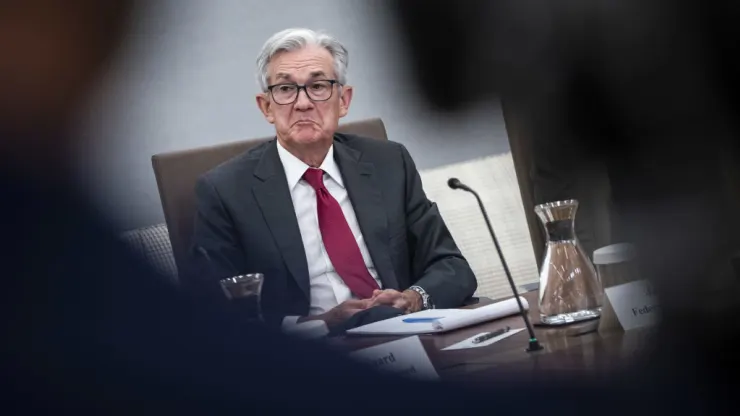Struggling to dampen inflation, the Federal Reserve announced a widely expected fourth consecutive “jumbo” 0.75 percentage point rate hike on Wednesday.
While raising interest rates can slow inflation by making borrowing more expensive and, therefore, less appealing. However, the move further increases debt costs for Americans already struggling with rising prices on everything, including necessities like food and rent.
According to Consumer Price Index data, the year-over-year inflation rate has remained stubbornly high, only slowing from a June peak of 9.1% to 8.2% as of September. That’s well above the central bank’s preferred inflation rate of 2%.
Fed Chair Jerome Powell has reaffirmed his commitment to lowering inflation with continued rate hikes in recent months. However, in August, he acknowledged that increasing the cost of borrowing will bring “some pain to households and businesses.”
By raising its benchmark federal funds rate — the interest rate at which banks borrow and lend to one another — the Fed increases the cost of borrowing for consumers, which, in turn, can cool down inflation. But increased interest rates discourage economic growth, which can trigger a recession in which many people already dealing with rising costs lose their jobs.
Ultimately, inflation affects people’s spending power more directly than interest rate hikes do. Although more increases may cause “some pain,” the Fed’s policy is meant to lower prices.
With today’s rate increase, the benchmark federal funds rate ranges from 3.75% to 4%. Rates are expected to peak at 4.5% to 4.75% in 2023, according to the U.S. central bank’s own projections. What is a Central bank you ask?
Last week, Goldman Sachs economists expected the Fed to lift its benchmark rate even higher, from 4.75% to 5%, by March 2023.
That means the borrowing costs will continue to get more expensive as more rate hikes are likely to follow.
Rate hikes increase the chance of a recession.
As successive rate increases discourage borrowing, many economists think a recession — a sustained decline in economic activity over several months — is more likely in 2023.
There’s a 2 in 3 chance that the economy will contract in the next 12 to 18 months, according to 14 economists surveyed by the financial services site Bankrate. That’s up from a 1 in 3 chance, according to a survey conducted at the beginning of the year.
Similarly, a Bloomberg survey of 42 economists predicts the probability of a recession over the next year is now 60%, up from 50% a month earlier.
More pessimistically, a Bloomberg probability model projects a 100% chance of a recession by Oct. 2023.
What will get more expensive
With increased interest rates, consumers can expect increased costs for several types of debt. Here’s a look at four common ones:
- Credit cards: The annual percentage rate (APR) on credit cards is likely to climb to an average of 19% from 18.16% as of late September, according to Greg McBride, Bankrate’s chief financial analyst. For a credit card balance of $5,000 with a 19% APR, you’d pay an additional $1,197 in interest costs compared to a 16% APR, which was the average interest rate at the beginning of 2022.
- Auto financing: Expect increased interest costs for new auto loans or auto loans with variable-rate financing. The average interest rate on a 60-month new car loan will likely increase slightly to 6% from its current rate of 5.63%, says McBride. Compared to Jan. 2022, that works out to about an extra $34 per month in auto financing payments for a $35,000 new car, he says.
- Mortgages: Interest rates for mortgages tend to rise with rate hikes, but the bond market more directly influences them. According to McBride, the rate for 30-year fixed mortgages could climb from just over 7% to 7.25% if inflation remains high or increases.
- Other variable-rate loans: Interest rates on variable-rate loans, like home equity loans and home equity lines of credit (HELOC), are likely to increase with the rate hike, says McBride. Currently, the average interest rate on these loans is closer to 7.3%, but they could climb to an average of 8%.
